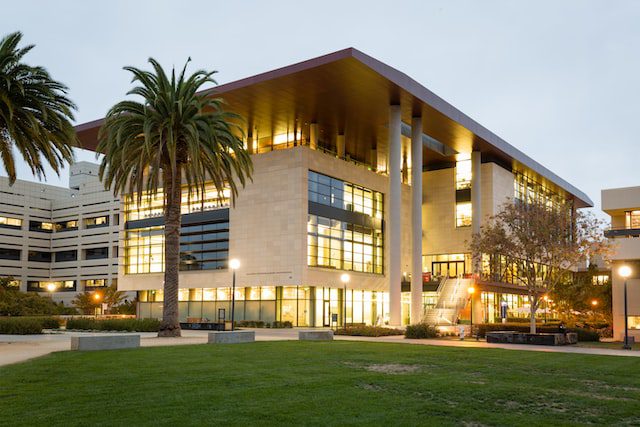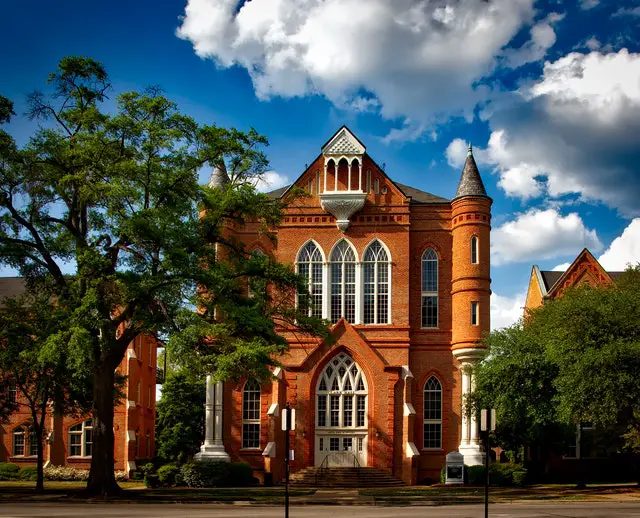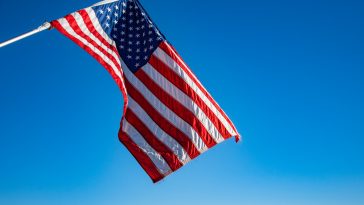
Stanford University is pending review. This post explains in detail how to study at Stanford University. This was further broken down into Courses Offered, Admission Requirements, Tuition Fees, and Ranking.
Stanford University is a private research university located in Stanford, California. Stanford University is known for its academic strength, and wealth, and is ranked as one of the best universities in the world on World.
About Stanford University
Located in the heart of Silicon Valley, Stanford University was founded by Jane and Leland in 1885 Stanford.
However, it was officially opened in 1889, and ever since, Stanford faculty and students have worked to improve the health and well-being of people around the world through the discovery and application of knowledge.
Major achievements at Stanford include the first successful heart-lung transplant, the debut of the computer mouse, and the development of digital music.
In terms of land area, Stanford University is situated on 8,180 acres and is one of the largest campuses in the United States with 18 interdisciplinary research institutes and seven schools on a single campus, including the Graduate School of Business; School of Earth, Energy and Environment Sciences; Graduate School of Education; Ingeniery school; Faculty of Humanities and Sciences; Law School; and Faculty of Medicine.
Stanford University has more than 16,300 students, 2,180 faculty, and 1,800 postdoctoral fellows. Stanford University is an international institution that enrolls students from all 50 US states and more than 90 countries.
It is also an athletics powerhouse, with 900 current student-athletes and a history of 137 national championships and 23 consecutive Directors’ Cups, awarded to the top intercollegiate athletics program in the nation.
Stanford University today boasts 19 Nobel Laureates within its community and numerous famous alumni associated with the university from the worlds of the arts, social sciences, business, politics, humanities, media, sports, and technology.
The 31st President of the US, Herbert Hoover, was one of the first class at Stanford, graduating with a degree in geology in 1895. Alumni include 17 astronauts, 18 Turing Award winners, and two Fields Medalists.
In total, the companies that were founded by Stanford affiliates and alumni generate more than $2.7 trillion in annual revenue, which would make it the 10th largest economy in the world.
Companies include Google, Nike, Netflix, Hewlett-Packard, Sun Microsystems, Instagram, and Charles Schwab. Stanford University alumni have also founded non-profit organizations such as Kiva and SIRUM.
The first American woman to go into space, Sally Ride, received a bachelor’s degree in physics from Stanford in 1973. Almost 10 years later, she made her ascent into space.
Notable Stanford University alumni
Over the years, Stanford University has produced important businessmen, politicians, academics, etc. Following is a list of some of the University’s notable alumni;
- Brian Acton (B.S. 1994), co-founder of WhatsApp
- Kurt Akeley (MS, Ph.D.), co-founder of Silicon Graphics
- Phil Knight, founder and former CEO of Nike
- Mike Krieger, co-founder of Instagram
- Jim Allchin (MS), Co-Chairman of Microsoft
- Gene D. Block, eighth president of the University of California, Los Angeles
- Derek Bok (AB 1951), 25th President of Harvard University
- Norman Abramson, the winner of the 2007 Alexander Graham Bell Award, developed the world’s first wireless computer communication network, ALOHAnet.
- Anant Agarwal, President of edX at MIT
- Ružena Bajcsy, recipient of the 2009 Benjamin Franklin Medal in Computing and Cognitive Science
- Andy Bechtolsheim (Ph.D. dropout), designer of the first networked SUN workstation
- Lawrence M. Breed (MS), created the first computer animation language, MACS; Grace Murray Hopper Award Winners
- Sergey Brin (MS), Google search engine developer, Marconi Award winner
- David Boggs (Ph.D.), co-inventor of Ethernet
- Rodney Brooks (Ph.D. 1981), director of the Computer Science and Artificial Intelligence Laboratory at MIT, winner of the Computers and Thinking Award.
- Vint Cerf (BS 1965, ex-professor), Internet pioneer, co-inventor of the TCP/IP Internet protocol, Turing Award, and Marconi Award-winning computer scientist, inducted into the National Inventors Hall of Fame
- Morris Chang (Ph.D. in the USA), 2010 IEEE Medal of Honor Award Recipient
- Mung Chiang (BS 1999, MS 2000, Ph.D. 2003), Arthur LeGrand Doty; Professor of Electrical Engineering, Princeton University; 2013 Alan T. Waterman Award Winner
- Donald D. Chamberlin (Ph.D. in EE), co-inventor of SQL (Structured Query Language), SIGMOD Edgar F. Codd Innovations Award
- Surajit Chaudhuri (Ph.D. in CS), SIGMOD Edgar F. Codd Innovations Award
- John M. Cioffi (Ph.D. in the USA), Leader in Digital Subscriber Line (DSL) Technology, Winner of the Marconi Award and IEEE Alexander Bell Award
- Thomas M. Cover (Ph.D. in EE 64), information theorist; Shannon Award winner, Hamming Medal
- Donald Cox (Ph.D. in the USA), IEEE Alexander Bell Award Winner
- Steve Deering, inventor of IP multicast, a technique for real-time one-to-many and many-to-many communication over an IP infrastructure in a network.
- Whitfield Diffie, the pioneer in public key cryptography, known for the Diffie-Hellman-Merkle public key exchange, was inducted into the National Inventors Hall of Fame, winner of the Marconi Award
- Les Earnest, research scientist. He created the first spell checker and the first cursive handwriting recognizer
- David Eppstein (B.S. 1984), computer scientist
- Paul Flaherty, inventor of the AltaVista search engine
- Scott Forstall (BS, MS), former senior vice president of iPhone software at Apple Inc.
- Richard P. Gabriel (Ph.D.), computer scientist
- Héctor García-Molina (Ph.D. and professor in CS), SIGMOD Edgar F. Codd Innovations Award
- Craig Gentry (Ph.D.), computer scientist, winner of the 2010 Grace Murray Hopper Award, known for solving “fully homomorphic encryption”, a breakthrough in public-key encryption
- Edward Ginzton (Ph.D. & prof), microwave electronics pioneer, IEEE Medal of Honor recipient
- Ian Goodfellow (BS and MS), developer of generative adversarial networks
- Susan L. Graham (Ph.D. in CS), IEEE John Von Neumann Awardee
- William Webster Hansen (Ph.D. and Prof), pioneer of microwave electronics
- Stephen E. Harris (MS and Ph.D. EE), noted for “slow” light research
- Martin Hellman (MS 1967, Ph.D. 1969, USA, Professor), the frontiersman in public key cryptography, known for the Diffie-Hellman-Merkle public key exchange, winner of the Marconi Prize, including in the National Inventors Hall of Fame
- Charles Herrold (graduate), inventor of the world’s first radio station
- William Hewlett (BE, ME in EE), founder of Hewlett-Packard, winner of the National Medal of Science
- Ted Hoff (Ph.D. 1962), the creator of the microprocessor, winner of the Kyoto Prize, inductee into the National Inventors Hall of Fame, winner of the national medal for technology
- John Hopcroft (Ph.D. 1964 in the US, former professor), Turing Award-winning computer scientist
- Daniel Henry Holmes Ingalls, Jr., MS. in CS, Grace Murray Hopper won
- Leslie Kaelbling (Ph.D. in computer science), recipient of the Computers Award and Thinking Award
- Professor Thomas Kailath in the USA, 2007 IEEE Medal of Honor Award Winner
- Lydia Kavraki (Ph.D. in CS), 2000 Grace Murray Hopper Award winner
- Alan Kay (Postdoc), Turing Award-winning computer scientist
- Dan Klein (Ph.D. in CS), winner of the 2006 Grace Murray Hopper Award
- Daphne Koller, Stanford CS Professor, ACM-Infosys Foundation Award Winner, Computer and Thinking Award Winner
- Douglas Lenat (Ph.D. in CS and former professor), Computer Science Award Winner and Thought Award
- Barbara Liskov (Ph.D.), the first female Ph.D. in Computer Science in the US, Ford Professor at MIT, Turing Award Winner
- John N. Little (ME 1980), co-inventor of MATLAB
- Albert Macovski (Ph.D.), the authority on computerized imaging systems with 150 patents
- Theodore Maiman (ME in EE and Ph.D. in physics), inventor of the ruby laser, the world’s first working laser; National Inventors Hall of Fame
- Jitendra Malik (Ph.D.), professor of computer science at UC Berkeley
- James Meindl, Former Professor, 2006 IEEE Medal of Honor Award Recipient
- Ralph Merkle (Ph.D. 1979, USA), a frontiersman in public key cryptography, known for the Diffie-Hellman-Merkle public key exchange, inducted into the National Inventors Hall of Fame
- Tom M. Mitchell (Ph.D., computer science), professor and head of the machine learning department at CMU, winner of the Computers and Thought Award
- Cleve Moler (Ph.D., ME 1980), co-creator of MATLAB
- Roger Moore, Grace Murray Hopper Winner
- Hans Moravec (Ph.D. 1980), co-designer of Stanford CART, the first computer-controlled robot car
Stanford University Tuition Fee/Cost of Attendance
The annual list price to attend Stanford University full-time is $69,109 for all students, regardless of where they live. This fee is made up of $48,987 for tuition, $15,112 for room and board, $1,455 for books and supplies, and $630 for other fees.
Below is a table with a breakdown of the various items and fees required at Stanford University.
| Objects | Share |
| Cost | $48,987 |
| books and supplies | $1,455 |
| Food and accommodation | $15,112 |
| Other charges | $630 |
| Budget for other expenses | $2,925 |
| Total | $69,109 |
University Ranking
According to the 2018 World University Rankings, Stanford University is currently ranked 2nd behind Harvard University which is ranked 1st.
Stanford University Campus
Central campus
The University’s central academic campus is adjacent to Palo Alto, bounded by El Camino Real, Stanford Avenue, Junipero Serra Boulevard, and Sand Hill Road.
The United States Postal Service has given it two ZIP codes: 94305 for campus mail and 94309 for post office box. It is located within the 650 area code.
Non-core campus
Stanford University currently operates or intends to operate a number of locations outside of its central campus.
In the foundation grant:
Jasper Ridge Biological Preserve is a 1,200-acre nature preserve south of the central campus owned by the university and used by wildlife biologists for research.
SLAC National Accelerator Laboratory is a facility west of the central campus operated by the University for the Department of Energy.
It contains the world’s longest linear particle accelerator, 2 miles (3.2 km) on 426 acres (172 ha) of land.
Golf Course and Seasonal Lake: The university also has its own golf course and a seasonal lake (Lago Lagunita, actually an irrigation reservoir), both home to the vulnerable California tiger salamander. As of 2012, Lake Lagunita was regularly dry, and the university had no plans to artificially fill it.
Outside of the foundation grant:
The Hopkins Marine Station, in Pacific Grove, California, is a marine biology research center owned by the university since 1892.
Study Abroad Locations: Unlike typical study abroad programs, Stanford operates in multiple locations around the world; therefore, each location has Stanford faculty in residence and staff in addition to students, creating a “mini-Stanford”.
China: The Stanford University Center at Peking University, located in the Lee Jung Sen Building, is a small center for researchers and students in collaboration with Peking University.
Development locations:
Redwood City – In 2005, Stanford University purchased a small 35-acre (14 ha) campus in Midpoint Technology Park intended for staff offices; Development was delayed by the Great Recession. In 2015, the university announced a development plan.
Courses Offered at Stanford University
Graduate School of Business
- Accounting (ACCT)
- Analysis and economic policy (MGTECON)
- Finance (FINANCE)
- GSB General and Interdisciplinary (GSBGEN)
- Human Resource Management Marketing (HRMGT) (MKTG)
- Operations Information and Technology (ILO)
- Organizational Behavior (OB)
- Political economy (politics)
- Strategic management (STRAMGT)
School of Earth Sciences, Energy and Environment
- Earth, Energy, and Environmental Sciences (EARTH)
- Ground Systems (EARTH)
- Earth, Energy, and Environment Sciences (EHEA)
- Energy Resources Engineering (ENERGY)
- Environment and Resources, Earth System Science (ESS)
- Geological Sciences (GEOLSCI)
- Geophysics (GEOFIS)
- Sustainability Science and Practice (SUST)
- Wood Institute for the Environment (ENVRINST)
- school of education
- Education (EDUC)
Engineering school
- Aeronautics and Astronautics (AA)
- Bioengineering (BIOE)
- Chemical Engineering (CHEMENG)
- Civil and environmental engineering (CEE)
- Computational and Mathematical Engineering (CME)
- Computer Science (CS)
- Design Institute (DESINST) Electrical Engineering (EE)
- Engineering (ENGR)
- Management Science and Engineering (MS&E)
- Materials Science and Engineering (MATSCI)
- Mechanical Engineering (ME)
- Scientific Computing and Computer Science Mathematics (SCCM)
Faculty of Humanities and Sciences
- African and Afro-American Studies (AFRICAAM)
- African and Middle Eastern Languages (AMELANG)
- African Studies (AFRICAST)
- American Studies (AMSTUD)
- Anthropology (anthropology)
- Applied Physics (APPPHYS)
- Arabic language (ARABLANG)
- Archeology (ARCHLGY)
- History of art (artist)
- Institute of the Arts (ARTSINST)
- Art Studio (ARTSTUDI)
- Asian American Studies (ASNAMST)
- Asian languages (ASNLANG)
- biology (bio)
- Biology/Hopkins Marine (BIOHOPK)
- Biophysics (BIOPHYS)
- Catalan language courses (CATLANG)
- Chemistry (CHEM)
- Chicana/o-Latina/o Studies (CHILATST)
- Chinese Chinese)
- Chinese language (CHINLANG)
- Classics (classics)
- Communication (COMM)
- Comparative Literature (COMPLIT)
- Comparative studies in race and ethnicity (CSRE)
- Dance Dance)
- Division of Literatures, Cultures, and Languages (DLCL)
- Drama (TAPS)
- East Asian Languages and Cultures (EALC)
- East Asian Studies (EASTASN)
- Economy (ECON)
- English English)
- English for foreign students (EFSLANG)
- Ethics in society (ETHICSOC)
- Feminist, gender and sexuality studies (FEMGEN)
- Film Production (FILMPROD)
- Film Studies (FILMSTUD)
- French Language (FRENLANG)
- French studies (FRENCH)
- German language (GERLANG)
- German Studies (German)
- Global studies (GLOBAL)
- History History)
- History and Philosophy of Science (HPS), Human Biology (HUMBIO)
- Human Rights (HUMRTS)
- Humanities Nucleus (HUMCORE)
- Humanities and Sciences (HUMSCI)
- Iberian and Latin American Cultures (ILAC)
- Institute of International Studies (FSI) (IIS)
- International Policy (INTLPOL)
- International Relations (INTNLREL)
- Italian Language (ITALLANG)
- Italian Studies (Italian)
- Japanese (Japan)
- Japanese Language (JAPANLNG)
- Jewish Studies (Jewish)
- Korean (Korea)
- Korean Language (KORLANG)
- Latin American Studies (LATINAM)
- Linguistics (LINGUIST)
- Mathematical and Computational Sciences (MCS)
- Mathematics (mathematics)
- Medieval Studies (MEDVLST)
- Modern Thought and Literature (MTL)
- Music)
- Native American Studies (NATIVEAM)
- Philosophy (FIL)
- Physics (physics)
- Political Science (POLISCI)
- Portuguese Language (PORTLANG)
- Psychology (PSYCH)
- Public Policy (PUBLPOL)
- Religious Studies (RELIGST)
- Russian, Eastern European, and Eurasian Studies (REES)
- Science, technology, and society (STS)
- Slavic language (SLAVLANG)
- Slavic Studies (SLAVIC)
- Sociology (SOC)
- Spanish language (SPAN LANG)
- Spanish, Portuguese, and Catalan literature (ILAC)
- Special Language Program (SPECLANG)
- Stanford in Washington (SIW)
- Statistics (STATISTICS)
- Symbolic Systems (SYMSYS)
- Theater and Performance Studies (TAPS)
- Tibetan language (TIBETLNG)
- Urban Studies (URBANST)
Law School
- Law (LAW)
Law, non-professional (LAWGEN)
School of Medicine
- Anesthesia (ANES)
- Biochemistry (BIOC)
- Biomedical Data Science (BIODS)
- Biomedical Informatics (BIOMEDIN)
- Interdisciplinary Biosciences (BIOS)
- Cancer Biology (CBIO)
- Cardiothoracic Surgery (CTS)
- Chemical and Systems Biology (CSB)
- Community Health and Prevention Research (CHPR)
- Comparative Medicine (COMPMED)
- Dermatology (DERM)
- Developmental Biology (DBIO)
- Emergency Medicine (EMED)
- Family and Community Medicine (FAMMED)
- Genetics (GENE)
- Health Research and Policy (HRP)
- Immunology (IMMUNOL)
- Medicine (MED)
- Interdisciplinary Medicine (INDE)
- Microbiology and Immunology (MI), Molecular and Cellular Physiology (MCP)
- Neurobiology (NBIO)
- Neurology and Neurological Sciences (NENS)
- Neuroscience Program (NEPR)
- Neurosurgery (NSUR)
- Obstetrics and Gynecology (OBGYN)
- Ophthalmology (PET)
- Orthopedic Surgery (ORTHO)
- Otorhinolaryngology (OTOHNS)
- Pathology (PATH)
- Pediatrics (PEDS)
- Physician Assistant for Studies (PAS)
- Psychiatry (PSYC)
- Radiation Oncology (RADO)
- Radiology (RAD)
School of General Medicine (SOMGEN)
- Stem Cell Biology and Regenerative Medicine (STEMREM)
- Structural Biology (SBIO)
- Surgery (SURG)
- Urology (UROL)
- Health and human performance
- Athletics and Sports Club (ATHLETICS)
- Kinesiology (KIN)
- Innovations in Leadership (LEAD)
- Lifeworks (LIFE) Outdoor Education (OUTDOOR)
- Physical Education (PE)
- Education for Wellness (WELLNESS)

















Please i want to apply for this scolarship what Can i do ?
Hi. Please read carefully the article above. It contains all the needed information also on how to apply for the scholarship.
Please I want to apply but I don’t see anything like apply
Hi. You should see that only on the University’s website that is offering the scholarship.
I want to study LLM In International Human Rights or International Criminal law at the University of Stanford
I want to apply for the community health and Prevention research online